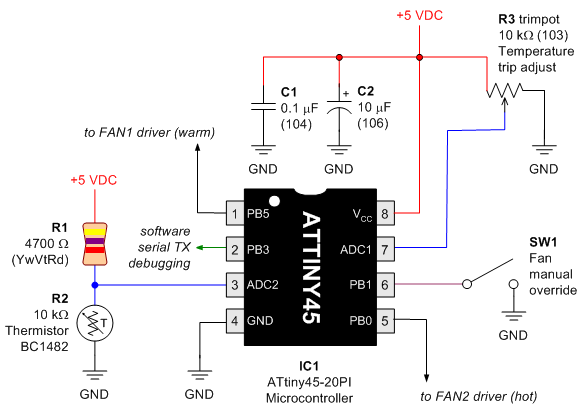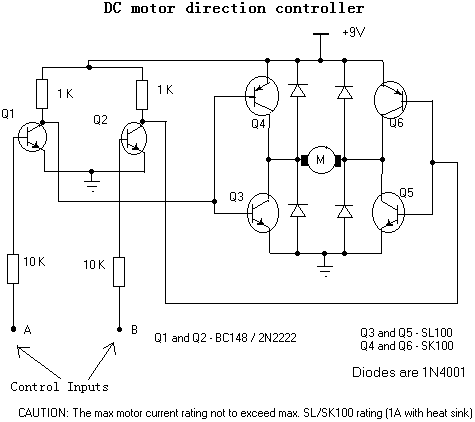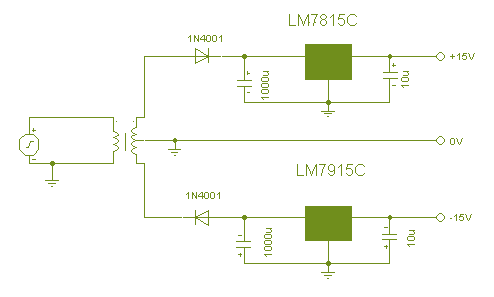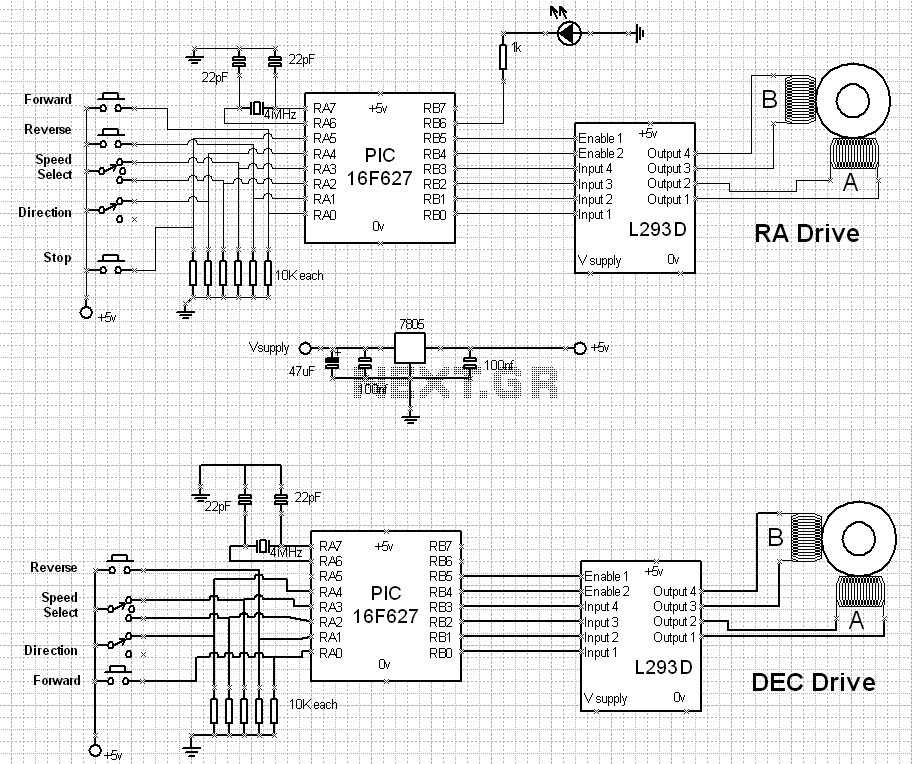
Dual Fan Controller

This project involves reading a thermistor using an Atmel ATtiny45 or ATMega168 microcontroller to control two fans for cooling a PC housed in a kitchen cabinet. A table is provided for converting the resistance of the BC1482 thermistor to Fahrenheit.
The circuit utilizes an Atmel ATtiny45 or ATMega168 microcontroller to monitor the temperature via a thermistor, specifically the BC1482 model. The thermistor's resistance varies with temperature, allowing the microcontroller to determine the current temperature by measuring this resistance. The microcontroller is programmed to activate two fans when the temperature exceeds a predefined threshold, ensuring effective cooling of the PC.
The thermistor is connected in a voltage divider configuration with a fixed resistor. The output voltage from the divider is fed into one of the analog input pins of the microcontroller. The microcontroller reads this voltage and converts it into a temperature value using a predefined conversion table that links resistance values to Fahrenheit temperatures. This conversion table is essential for accurately interpreting the thermistor readings.
The fans are connected to the microcontroller via a relay or a transistor switch, allowing the microcontroller to control their operation based on the temperature readings. The choice of using two fans provides redundancy and enhances airflow, which is particularly important in the confined space of a kitchen cabinet.
In summary, this circuit effectively combines temperature sensing with fan control to maintain optimal operating conditions for a PC in a potentially warm environment, such as a kitchen. The use of an Atmel microcontroller allows for flexible programming and integration of additional features, such as adjustable temperature thresholds or fan speed control.Describes reading a thermistor using an Atmel ATtiny45 or ATMega168 microcontroller to drive two fans to cool a PC installed in a kitchen cabinet. Include a table for converting the BC1482 resistance to Fahrenheit.. 🔗 External reference
The circuit utilizes an Atmel ATtiny45 or ATMega168 microcontroller to monitor the temperature via a thermistor, specifically the BC1482 model. The thermistor's resistance varies with temperature, allowing the microcontroller to determine the current temperature by measuring this resistance. The microcontroller is programmed to activate two fans when the temperature exceeds a predefined threshold, ensuring effective cooling of the PC.
The thermistor is connected in a voltage divider configuration with a fixed resistor. The output voltage from the divider is fed into one of the analog input pins of the microcontroller. The microcontroller reads this voltage and converts it into a temperature value using a predefined conversion table that links resistance values to Fahrenheit temperatures. This conversion table is essential for accurately interpreting the thermistor readings.
The fans are connected to the microcontroller via a relay or a transistor switch, allowing the microcontroller to control their operation based on the temperature readings. The choice of using two fans provides redundancy and enhances airflow, which is particularly important in the confined space of a kitchen cabinet.
In summary, this circuit effectively combines temperature sensing with fan control to maintain optimal operating conditions for a PC in a potentially warm environment, such as a kitchen. The use of an Atmel microcontroller allows for flexible programming and integration of additional features, such as adjustable temperature thresholds or fan speed control.Describes reading a thermistor using an Atmel ATtiny45 or ATMega168 microcontroller to drive two fans to cool a PC installed in a kitchen cabinet. Include a table for converting the BC1482 resistance to Fahrenheit.. 🔗 External reference





